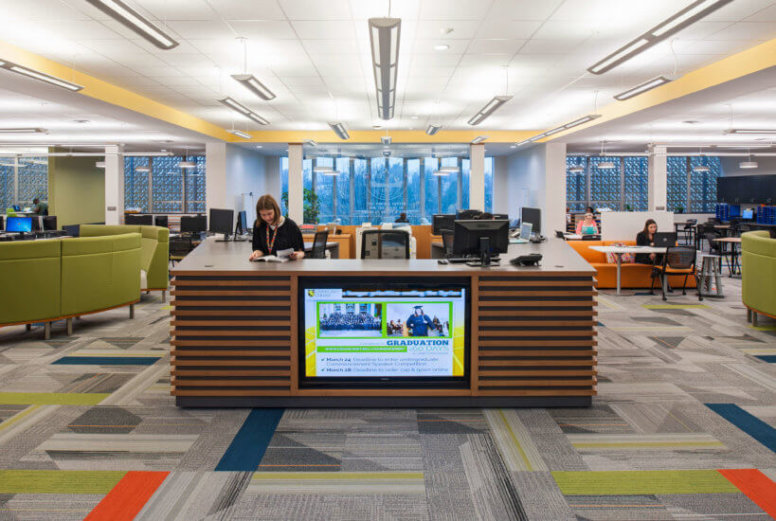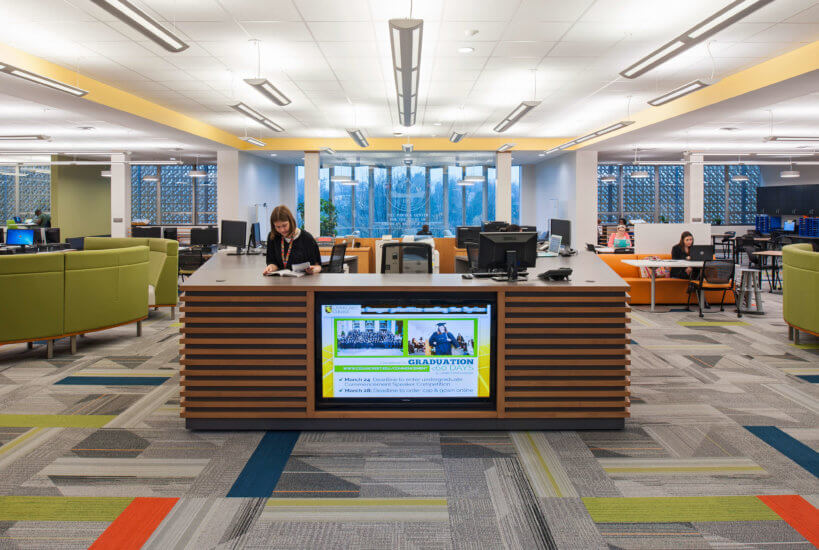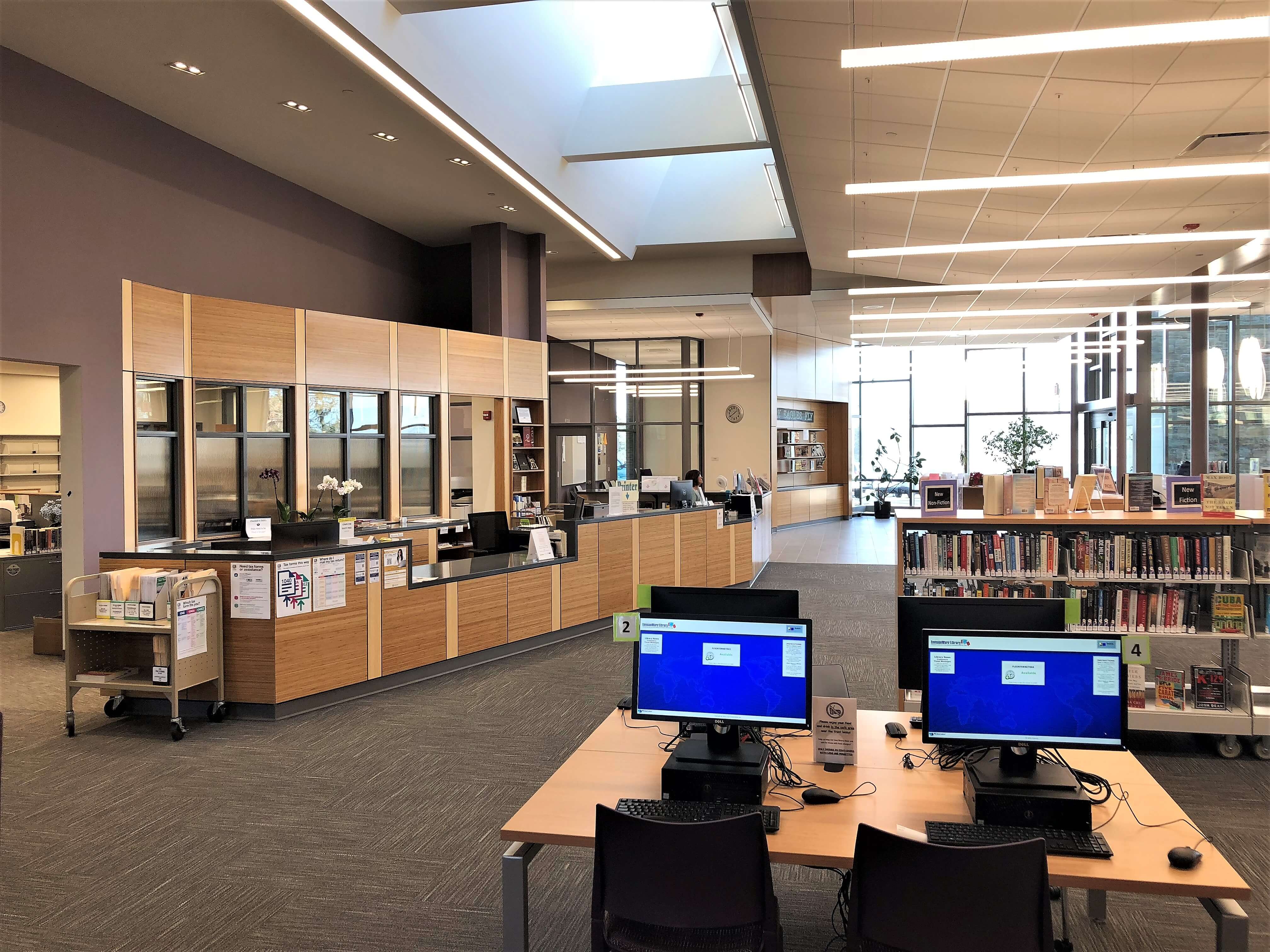
Building libraries for the digital age
With the growing prevalence of technology in all facets of life—including learning—educational institutions are increasingly choosing to redefine their approach to libraries. They are renovating existing structures and building new ones with an eye towards equipping them to serve modern students and communities with spaces and resources that meet their evolving needs.
Redefining library spaces
Traditionally, libraries were buildings where information was physically housed. Students combed through card catalogs to determine which books they needed, walked through aisles to retrieve them and sat down at a table or carrell desk to read them.
The rise of the digital era has opened up a world of opportunities for modern libraries. While they certainly still hold books and archives, they are shifting away from being a primarily physical repository of information to a hub where people can access information via technology and find guidance on digital literacy.
This openness has given modern libraries a flexibility they never had before, enabling them to keep current with other significant trends in construction for higher education, like the emphasis on creating spaces that can be leveraged for multiple purposes.
Construction for modern design
As designs shift to accommodate changing needs, the renovation of existing libraries and construction of new ones involve creating spaces that support multimedia research and applications.
Students either arrive at libraries with their own laptops, iPads and other devices, or they expect to utilize technology in place there. Either way, modern libraries require the space and infrastructure to support connectivity and a strong technological presence.
Along with a greater capacity to support digital media, modern libraries are also transitioning from being places where people generally go to study alone and quietly, to places where there are dedicated areas for collaborative work, blended learning and creative expression.
In keeping with this emphasis, modern libraries now feature more open designs and often include a centralized and easily visible location for librarians and resource personnel to be a readily accessible source of guidance.
Skepton Construction has extensive experience renovating and constructing libraries to meet the needs of modern students, as exemplified by their work at Cedar Crest College in Allentown, PA. Completely renovating the interior of the campus’ 5,000 sq. ft. library, they transformed the main level from a traditional floor plan to a modern, open space for student collaboration with a centralized area for academic support and an eat-in café. Skepton Construction also renovated the Springfield, PA Township Public Library (as part of the undertaking of renovating the entire complex), adding a new commons/instructional area for students to meet and collaborate.
At Cedar Crest College, Springfield Township Public Library and across the nation, the trend is clear: libraries are being built around people now, rather than collections. The best construction will honor what libraries have always stood for—access to knowledge—in ways that are most relevant for modern learners.
Photo Library
 Cedar Crest College Library
Cedar Crest College Library
 Springfield Township Public Library
Springfield Township Public Library
